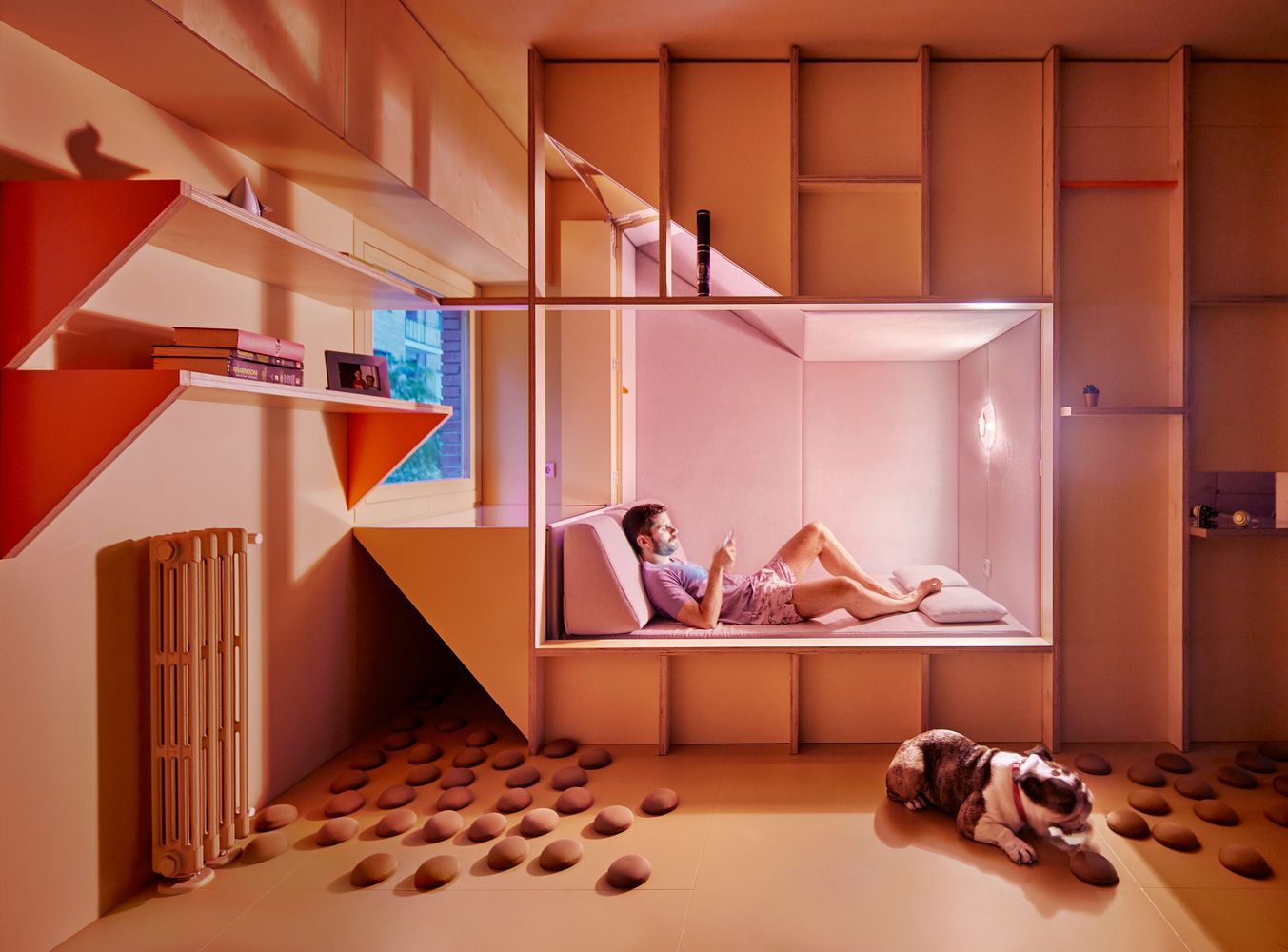Proper Lighting is an often overlooked, and yet all important part of an individuals well-being. As mammals, we operate on a circadian rhythm, and for us, that means we tend to be more alert during daylight hours and more drowsy and tired during the night. In modern culture, we have begun spending nearly 90% of our time indoors, and the lack of access to natural light or the excess of blue light at night has been shown to disrupt the well being of individuals and mess with their circadian rhythms. . The Well Certification process comprises 7 variables to consider when designing for lighting needs in order to help maintain the wellness of individuals. Let’s break some of these principals down and go into solutions over how you can incorporate better lighting solutions into your design.

Light Exposure
One of the greatest challenges we face in modern buildings and cities is accessibility to appropriate levels of light while in indoor environments. With the increased use of electrical lighting in the built environment, less and less access to natural lighting throughout the day has led to impaired basic functions within humans. This includes increases in depression and reduced cognitive functions. To combat these negative effects, designers should build to increase daylight exposure in the space. Layouts should regulate frequently occupied spaces to the exterior of floorplans where more daylight exposure can occur. Ideally, seating in unrestricted, unassigned spaces should be 5’ from any transparent glazing to the exterior of a building. Transparent glazing should also make up no less than 10% of the gross indoor floor area. There are also lighting strategies that use electrical lighting that can help achieve the proper light exposure.

Visual Lighting Design
As we age, our ability to absorb and transmit light through the lens of our eyes reduces. This is due to the size of our pupils changing, the scattering of light from the thickening of lenses, and the yellowing of the lens. Therefore, it is critical and important to take into account the levels of luminescence required to complete a task. Some solutions to consider are adjustable lights that can vary the output of light into the environment. Varying the level of the work plane and having adjustable height tables may also aid in how much light is able to reach a surface. Finally, including a variety of lighting options that individuals can control like desk lamps and diffused overhead lighting allows individuals to control exactly how much light they need to complete a task.

Circadian Lighting Design
We previously discussed how a lack of exposure to light can be detrimental to humans, but on the opposite side, too much exposure to lighting at night also contributes to disruptions of circadian rhythm. This exposure to light at night is linked with a multitude of negative health effects, which includes breast cancer, sleep disorders, mental disorders, and metabolic disorders. It is important that when designing electrical lighting, that we try to incorporate different and changing color temperatures. Also having dimmers will help reduce the strain placed on eyes later in the evening and into the night. Modern applications like google home can also be digitally programmed to change with the light throughout the day to match the outdoor lighting conditions. These changes can help keep a healthy circadian system in humans which will lead to improved sleep quality, mood and cognitive abilities.

Some final considerations and takeaways from the Wellness standards is to allow and design for users of a space to have control and accessibility of their environment. Being able to have authority over your space and your needs ultimately makes solutions that can span a variety of ages and demographics. Knowledge over the negatives of reduced exposure to natural light, and over exposure of light at night, betters the quality of life for users of the space and keeps the body functioning at its optimal levels. Talking to a lighting designer at the start of a project will help plan for optimal lighting solutions for your project.
